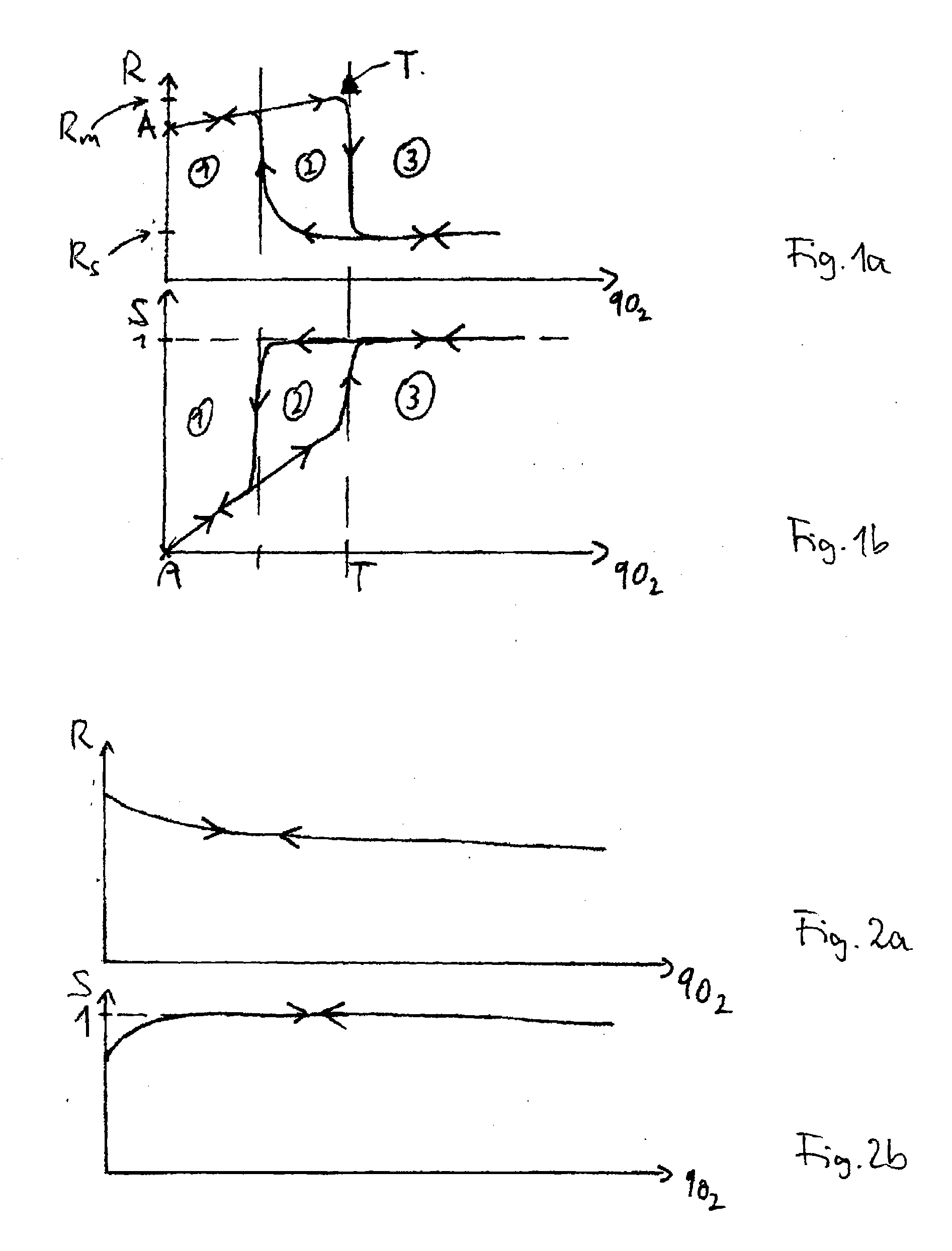Sputter target, method for manufacturing a layer, particularly a tco (transparent conductive oxide) layer, and method for manufacturing a thin layer solar cell
a technology of transparent conductive oxide and sputter target, which is applied in the direction of electrolysis components, vacuum evaporation coatings, coatings, etc., can solve the problems of inability to avoid “target poisoning” and instabilities of the process, and achieve low oxygen bombardment, high sputter rate, and stable coating
- Summary
- Abstract
- Description
- Claims
- Application Information
AI Technical Summary
Benefits of technology
Problems solved by technology
Method used
Image
Examples
Embodiment Construction
[0040]FIGS. 1a and 1b illustrate the hysteresis and the stoichiometric proportion, respectively, depending on the O2 flow when depositing a ZnO film from a metallic target in a reactive sputter process.
[0041]In FIG. 1a the deposition rate R is indicated responsive to the oxygen flow. When increasing the oxygen flow from a starting point A in an area of oxygen flow indicated with (1) and (2) (first branch of the hysteresis loop) the maximum deposition rate R is reached immediately before reaching an instable transition point T. When further increasing the oxygen flow into an area of oxygen flow indicated with (3), the deposition rate R decreases rapidly to a more or less stable value R,. At this point, the deposition rate is quite low while the process is stable over a wide range. Even when decreasing the oxygen flow into the area of oxygen flow indicated with (2) the deposition rate does not vary considerably (second branch of the hysteresis loop). Only when approaching the area of ...
PUM
| Property | Measurement | Unit |
|---|---|---|
| Transparent Conductive | aaaaa | aaaaa |
| hysteresis | aaaaa | aaaaa |
| deposition rate | aaaaa | aaaaa |
Abstract
Description
Claims
Application Information
 Login to View More
Login to View More - R&D
- Intellectual Property
- Life Sciences
- Materials
- Tech Scout
- Unparalleled Data Quality
- Higher Quality Content
- 60% Fewer Hallucinations
Browse by: Latest US Patents, China's latest patents, Technical Efficacy Thesaurus, Application Domain, Technology Topic, Popular Technical Reports.
© 2025 PatSnap. All rights reserved.Legal|Privacy policy|Modern Slavery Act Transparency Statement|Sitemap|About US| Contact US: help@patsnap.com



